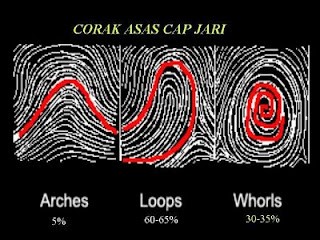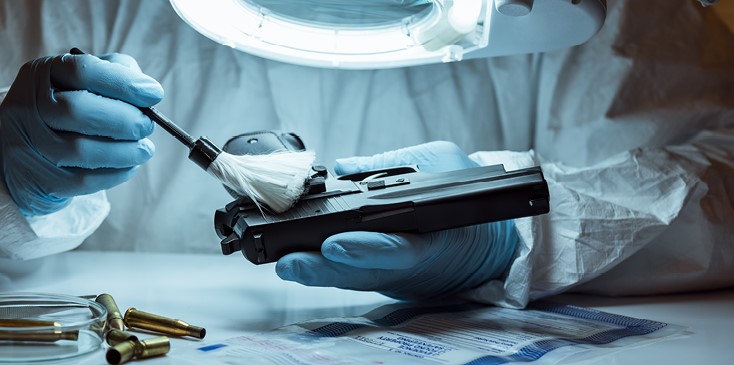Introduction
Fingerprints have long been an essential tool in forensic investigations. Each individual possesses a unique fingerprint, similar to a fingerprint but smaller and more detailed. In scientific terms, fingerprints are known as “dactyloscopy.” Dactyloscopy has proven to be an effective method of individual identification, aiding law enforcement in solving crimes and accurately identifying suspects. This article will discuss fingerprints and their application in forensic investigation, including the types of ridge patterns on the fingers and their uniqueness.
Definition of Fingerprints
Fingerprints refer to the impressions of patterns found on the tips of human fingers. These patterns are formed by skin ridges known as the ridge lines and the ridge furrows that make up the papillary display. These papillae have microscopic ridges that form unique patterns for each individual.
Application in Forensic Investigation
Fingerprints have become a crucial element in forensic investigations. The use of fingerprints assists investigators in:
- Individual Identification
Fingerprints allow investigators to identify individuals with high accuracy. They not only aid ongoing criminal investigations but also help link individuals suspected in long-standing criminal cases. - Evidence of Presence
Fingerprints detected at a crime scene provide evidence of someone’s presence at that location during a certain period. This can be crucial in establishing an alibi or connecting a suspect to the crime. - Criminal Case Investigation
Fingerprints serve as valuable information sources in the investigation of violent crimes, sexual offenses, and many others. Fingerprint evidence is often used to support or refute witness testimonies.
Types of Ridge Patterns on Fingers and Their Uniqueness
Each individual possesses a unique fingerprint. There are three main types of ridge patterns on fingers that form fingerprint patterns:
- Arches: Arches are fingerprint patterns that form a curve from one side of the finger to the other without forming a core. The uniqueness of arch patterns lies in their simple curvature and lack of core points.
- Loops: Loops are fingerprint patterns that form a curve but have one or more core points in the center. Loop patterns can be further divided into radial loops and ulnar loops. The uniqueness of loop patterns lies in the number, position, and shape of their core points.
- Whorls: Whorls are fingerprint patterns that form a clustered whirl-like shape. There are several subcategories of whorl patterns, such as double loops, plain whorls, central pocket loops, and others. The uniqueness of whorl patterns lies in the arrangement of the whirls and their relationship with the core points and the axis.

Three main types of ridge patterns on the surface of the fingers form the uniqueness of fingerprints.
Taken from: http://alongwawaerna.blogspot.com/2012/06/cap-jari-manusia.html
Uniqueness of Fingerprints
Each individual possesses a unique fingerprint. The uniqueness of fingerprints is based on various factors, including genetics, fetal development during pregnancy, and the pressure and activities performed throughout life. These factors cause an individual’s fingerprint pattern to be unique and unlikely to be the same as that of another individual, even with biological siblings.
Fingerprint Detection Techniques
- Visual Method:
The visual method is the most basic way to detect and compare fingerprints. Forensic experts use magnifying lenses and microscopes to examine unique fingerprint features such as ridges, ridge endings, and core circles. This process requires a high level of expertise and relies entirely on the competence and experience of the forensic expert. - Use of Coloring Agents:
In this technique, coloring agents like powders or liquids are used to enhance faint fingerprints on surfaces. These fingerprints are then recorded using camera equipment and can be used for further analysis. - Chemical Reactive Imaging:
Chemical reactive imaging involves the use of specific chemicals that react with fingerprint components to produce visible images. For example, testers may use dyes such as ninhydrin or DFO (dianilinofluorescein) to detect fingerprints on hard-to-see surfaces. -
Non-Contact Imaging:
This technique uses imaging equipment such as optical fingerprint scanners or laser imaging to detect and record fingerprints without touching the surface. This technique offers the advantage of reducing the risk of damage to fingerprint evidence and allows for faster data transfer.

Overview of Fingerprint Detection Techniques
Taken from: https://www.nu.edu/blog/becoming-a-fingerprint-analysis-pro/
Conclusion
Fingerprints are crucial tools in forensic investigation that have helped solve various types of criminal cases and accurately identify individuals. With the uniqueness of fingerprints and no two being the same, they become strong tools in linking individuals to specific criminal acts, proving presence at crime scenes, and supporting investigations into violent incidents and related cases. Various fingerprint detection techniques play a vital role in ensuring the reliability of analyses and make significant contributions to the field of forensic investigation as a whole.
References
-
Bansal, N. (2019). Fingerprint Identification and Verification System using Minutiae Matching. International Journal of Engineering and Advanced Technology (IJEAT), 9(2), 457-461.
-
Mehta, R., & Singh, R. (2018). Fingerprint Recognition System: A Review. International Journal of Computer Applications, 181(47), 9-13.
-
Prasad, V., Kumar, A., & Singh, R. (2020). A Comprehensive Review on Fingerprint Recognition Systems. International Journal of Scientific Research in Computer Science, Engineering and Information Technology (IJSRCSEIT), 5(6), 46-52.
-
Sharma, M., Chatterjee, S., & Chowdhury, I. (2017). Fingerprint Scanning Techniques: A Review. International Journal of Computer Applications, 169(7), 6-11.
| Last Reviewed | : | Februari 2024 |
| Writer | : | Noor Asyikin bt. Suaidi |
| Reviewer | : | ChM. Dr. Khairul Adli bin Nikman |







